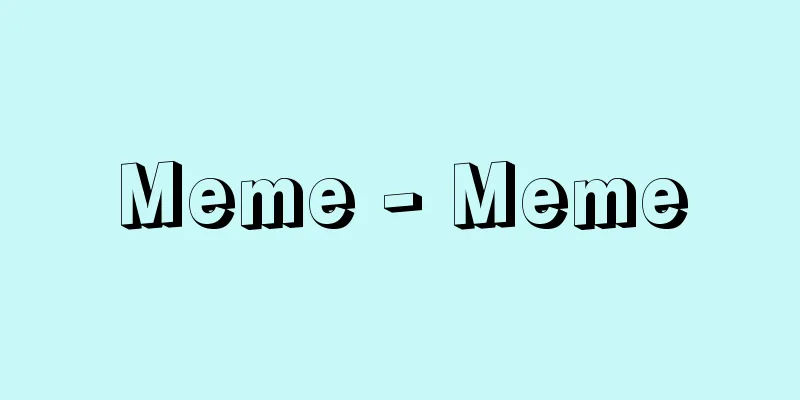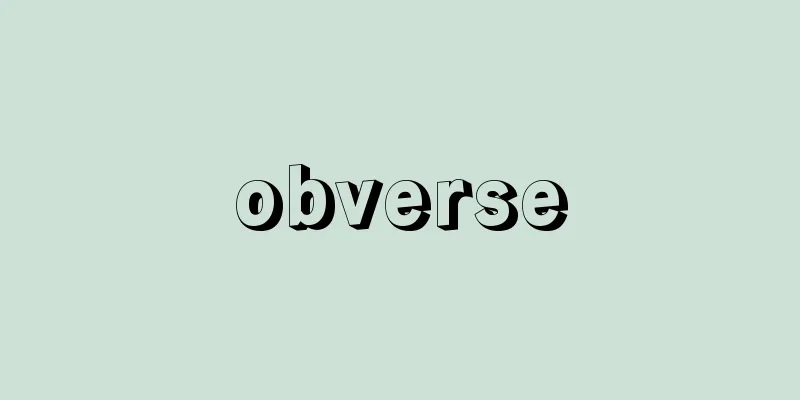Meme - Meme

|
A concept coined by Richard Dawkins (1941- ) as a counter-concept to genes. It was proposed in The Selfish Gene (originally first published in 1976, translated in 1991, Kinokuniya Shoten). Genes create the body, but memes create culture. And just like genes, they are passed on to the next generation by natural selection. Dawkins proposes the principle that "all living organisms evolve based on the difference in survival rate of self-replicating entities" as a universal law comparable to the physical laws in biology. Meme is a word coined by Dawkins, and is said to be a contraction of the Greek word "mimeme," which refers to a unit of self-replication or imitation, to make it the counter-concept of "gene." Memes are not metaphors, but entities just like genes. In the evolution of living organisms, there are several examples where education (the transmission of culture) is as important as the body. For example, it has been shown that the cries of some birds and the hunting habits of animals are not written in genes, but are the result of education from parents to children. Human culture, especially language and the stories passed down through it, and religion are also memes. [Hideyuki Nakajima September 17, 2019] Source: Shogakukan Encyclopedia Nipponica About Encyclopedia Nipponica Information | Legend |
|
ドーキンスRichard Dawkins(1941― )によって、遺伝子geneの対概念として命名された概念。『利己的な遺伝子』The Selfish Gene(原著初版1976/翻訳版1991・紀伊國屋書店)で提唱された。遺伝子は体をつくるが、ミームmemeは文化をつくる。そして遺伝子と同じように淘汰(とうた)によって次の世代へと引き継がれていく。ドーキンスは生物学における物理法則に匹敵するような普遍的法則として、「全ての生物は自己複製を行う実体の生存率の差に基づいて進化する」という原理を提唱している。ミームというのはドーキンスの造語であるが、この自己複製あるいは模倣の単位をさすギリシア語「mimeme」を「gene」と対になるように縮めたとしている。 ミームは比喩(ひゆ)ではなく遺伝子と同じく実体である。実際の生物進化においても教育(文化の伝承)が体と同様に重要である例がいくつか示されている。たとえば、一部の鳥類の鳴き声、動物による狩りなどは遺伝子に書かれた情報ではなく、親から子への教育の結果であることが示されている。また、人間のもつ文化、とくに言語とそれによって語り継がれる物語、宗教などもミームである。 [中島秀之 2019年9月17日] 出典 小学館 日本大百科全書(ニッポニカ)日本大百科全書(ニッポニカ)について 情報 | 凡例 |
<<: Mimnermos (English spelling)
Recommend
Long Live Kaga - Kaga Manzai
...It is said that Manzai was performed at the Im...
Isopod (Aega dofleini)
A small crustacean of the isopod family, Ploceidae...
theos apo mēchanēs (English spelling) theosapomechanes
…It is a Latin translation of the Greek theos apo...
Yi-shan Yi-ning (English spelling)
[School] Junsuke 7 (1247) [Died] October 25, 1317,...
Cradle song (English spelling)
...And a type of folk song that was once sung by ...
Alice Story - Alice Story
Two fairy tales written by the English author Lewi...
ribbed vault
… [New style of church architecture] The Gothic s...
Anna Andreevna Ahmatova (English spelling)
Russia's greatest female poet of the 20th cen...
Vaiyākaraṇa (English spelling)
…A major Indian school of grammar and linguistic ...
Jali (English spelling)
...According to the classical tradition of Islami...
Benserade, I.de (English spelling) BenseradeIde
...The operas Cadmus et Hermione (1673), Alceste ...
Swordplay - Kengeki
A popular form of theatre that highlights the app...
Hojo Ujimasa
Year of death: July 11, 1590 (August 10, 1590) Yea...
Barānī (English spelling)
…They are also known as the Black Sheep Dynasty. ...
Mitsuyoshi Yoshida
A mathematician from the early Edo period. Common...









